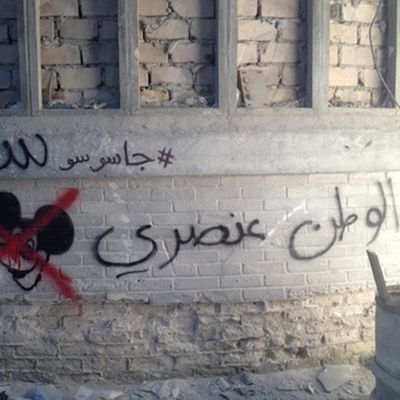
The second episode of Homeland found Carrie in a Syrian refugee camp, walking by Arabic graffiti. The work was the result of a collaboration of Egyptian artists Heba Amin, an associate professor at the American University in Cairo, and Caram Kapp, an Egyptian-German artist living in Berlin. Stone, the moniker of their friend who works as a publisher in Berlin, contacted them on behalf of Homeland┬ábecause he was tasked with finding graffiti artists ÔÇö┬áor ÔÇ£Arabian street artists,ÔÇØ as they were originally called ÔÇö┬áto provide authenticity to the background. Instead, they chose to use the opportunity to spray-paint┬áÔÇ£Homeland is racist.ÔÇØ ┬á
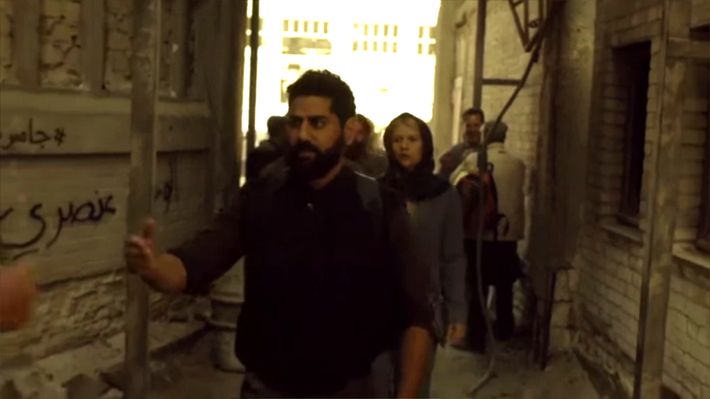
On the set in the outskirts of Berlin, Amin and Kapp were given loose guidelines, including the suggestion that they could spray-paint proÔÇôBashar al-Assad graffiti. ÔÇ£At that moment it was clear that they did not know the content with which they were dealing with,ÔÇØ Amin said to me via Skype. ÔÇ£We were asked not to be too political. There was a suggestion that writing Mohammed is the greatest is okay. Other than that, we were given free rein to write whatever we want.ÔÇØ
Amin and Kapp then set about tagging various phrases, all of which can be seen on AminÔÇÖs blog, including those with American relevance, like ÔÇ£#BlackLivesMatter,ÔÇØ to simply, ÔÇ£Homeland is racist.ÔÇØ ÔÇ£One of my favorites is the ÔÇÿHomeland is a watermelonÔÇÖ one,ÔÇØ said Amin. ÔÇ£ThatÔÇÖs a very common phrase thatÔÇÖs used to address something thatÔÇÖs a joke or a sham.ÔÇØ
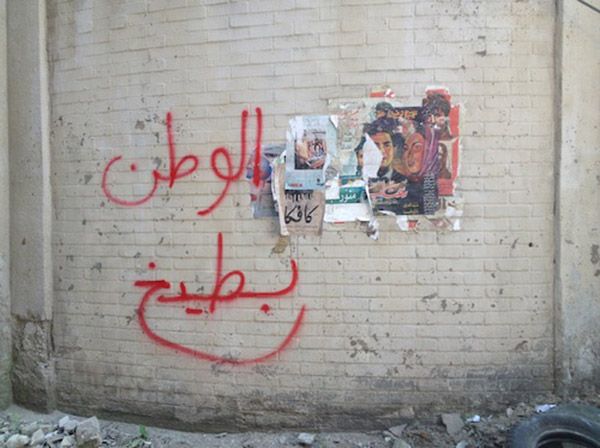
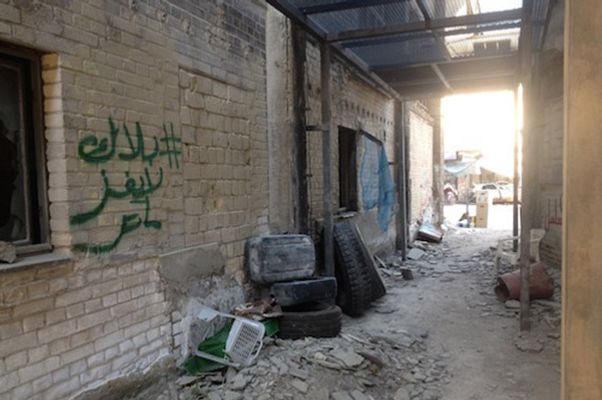
To prepare for the work, Amin binge-watched the entirety of Homeland. ÔÇ£I didnÔÇÖt watch Homeland prior to doing this intervention,ÔÇØ she said. ÔÇ£I had specifically decided to boycott the show. But when this opportunity came up, I decided to watch the entire series so that I knew the context of what I was functioning within.ÔÇØ As she watched it, the show confirmed many of her suspicions. Amin said, ÔÇ£ItÔÇÖs an enormously popular show, and up until this current season it was taking place predominantly in the Middle East/Islamic world region, and depicting that region in a very particular way that reinforces this mythological stereotype that exists in a lot of the Western world.ÔÇØ ┬á
Indeed, Homeland has received pointed criticism for its cultural inaccuracies and perpetuations of stereotypes ÔÇö┬áfrom depicting BeirutÔÇÖs bustling, cosmopolitan Hamra Street as a dangerous, xenophobic space, to giving one of their terrorist characters the same name as the Pakistani ambassador to the U.S. Amin sees this conflation as creating a vicious cycle that eventually feeds into foreign policy.
ÔÇ£[Homeland] pretends to be a controversial or subversive show because they critique American policy abroad,ÔÇØ said Amin. ÔÇ£At the very same token, theyÔÇÖre still using these very one-dimensional stereotypes of what the Middle Eastern region is about. Throughout the show, thereÔÇÖs such gross inaccuracies of how the region is depicted that for us it addresses this idea that this is not just ÔÇÿfictionÔÇÖ or a fictional story, but these images reinforce the very perceptions that people have about the region that in turn affect us in a very real way. Because it does in fact affect how governments are functioning within the region.ÔÇØ
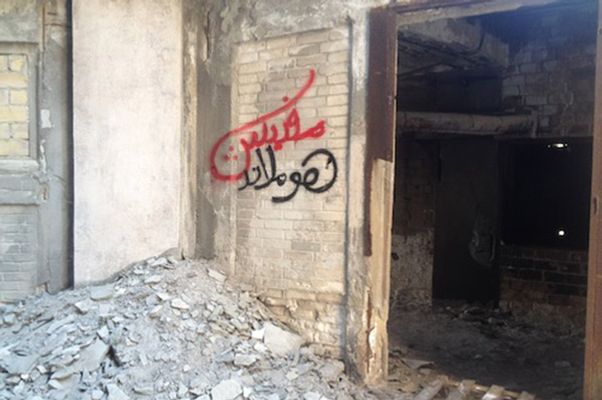
In response to the subversive tagging, co-creator and showrunner Alex Gansa released the following statement: ÔÇ£We wish weÔÇÖd caught these images before they made it to air. However, as Homeland always strives to be subversive in its own right and a stimulus for conversation, we canÔÇÖt help but admire this act of artistic sabotage.ÔÇØ
ÔÇ£ItÔÇÖs interesting. If theyÔÇÖre really willing to have a discussion, that makes us happy,ÔÇØ Amin said when I asked her about the statement. She sees this moment as an opportunity for dialogue. ÔÇ£This was a way for us to claim our image back by undermining and poking fun at the inaccuracies of the show, to address the idea that this is absurd: The ways in which we are constantly represented in media and in film is impacting our daily lives.ÔÇØ

